TABLE OF CONTENTS
Learning how feminized cannabis seeds are important in order to save time and money on your cannabis garden. When traditional fertilization methods are used to grow your cannabis plants, you have less control over the gender of future cannabis plants.
That is why many cannabis growers take extra steps to produce female cannabis plants when harvesting. We show you different ways you can feminize seeds before harvest.
What are Feminized Cannabis Seeds?
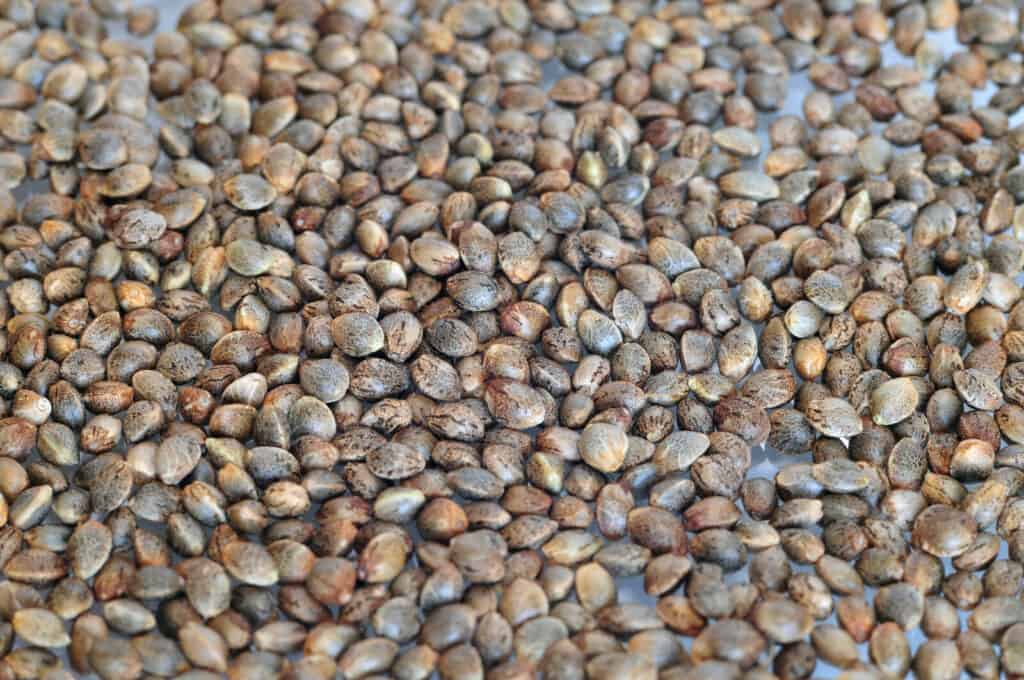
Feminized cannabis seeds produce only female cannabis plants.
A cannabis garden that uses high-quality feminized seeds will produce a female-only crop without male plants, which can unintentionally pollinate your crop and potentially reduce your flower yield.
What are Regular Cannabis Seeds
A regular seed results from natural pollination and the breeding of male and female seeds together without any chemical modification.
Cannabis growers working with regular seeds have a 50/50 chance of either yielding a female or male marijuana plant. The sex of the plant is determined by the genetics of the parent plants, and it is not possible to determine the sex of the plant from a regular cannabis seed before it is germinated and starts to grow.
Growing from regular seeds isn't the best option if you’re looking to strictly grow cannabis buds. While male plants serve their specific purpose of pollinating females, they don't produce the trichome-covered flowers that female plants do.
How Are Feminized Cannabis Seeds Made?
Feminized cannabis seeds serve a major purpose for commercial and home growers. Feminized seeds can be made by inducing a regular female cannabis plant to grow male sex organs that contain pollen, also known as hermaphroditism. The hermaphroditic pollen will contain only the female X chromosome and no male Y chromosomes.
When used to pollinate a female cannabis plant, the seeds produced between the two plants will inherit two X chromosomes meaning that all future seeds will be feminized.
This method of seed production is widely used in the cannabis industry as it allows growers to produce high-quality buds with a higher yield. It also eliminates the need for growers to wait for the plant to reveal its sex, which can be a time-consuming process.
The Benefits of Growing Feminized Cannabis Seeds
Growing feminized cannabis seeds has many benefits over regular seeds.
Save Time and Money
For one, growers don't have to hedge their bets hoping that the regular seeds will produce female plants. Instead of planting more regular strains than needed to get lucky and get enough females for your specific purpose, you can stick with a sure bet using feminized strains.
Ease of Cultivation
Male plants run the risk of pollinating female plants causing them to develop hermaphroditic structures and, ultimately, lower your plants’ yield compared to a grow without male plants.
Weeding out the male plants, however, takes time and energy. Male plants display their sexual organs when the photoperiod changes naturally or when indoor lighting environments change.
No Male Plants
Growers that don't want to spend the time monitoring the plant every day can use feminized seeds to ensure that their garden will grow flower buds.
Otherwise, growers will have to keep their eyes peeled for male plants and remove them from the grow immediately or else risk unintentionally pollinating female plants.
Consistency
Feminized seeds are also known for producing plants that are more consistent in terms of their appearance, aroma, and effects. This can benefit growers looking to produce a specific type of cannabis strain.
No Need for Breeding
Finally, feminized seeds do not require breeding like regular seeds do, as feminized seeds will produce female plants regardless of the genetics of the parent plants. This can save you the time and effort required to breed your own seeds.
Male vs Female Marijuana Plants
Generally speaking, there is no way that you can determine the difference between male and female cannabis seeds in the initial stages of planting. In addition, you are also not able to change the gender of your cannabis seeds.
The differences between male and female marijuana plants can be subtle, but they can be distinguished by looking at the pre-flower stage, typically around 4-6 weeks after planting. Female plants will have a calyx, which is a small bulb-like structure at the base of the buds, while male plants will have small sacs called pollen sacs.
The purpose of using feminized marijuana seeds is to maximize the female seeds that will be part of your marijuana crop.
Why would you want female marijuana plants? Well, these are known to have a higher level of THC content. Male plants have reduced THC content, and for that reason, female plants take precedence over male plants.
With cannabis seed feminization, there are several pollination techniques that the marijuana grower can use for a favorable outcome.
Feminized Seeds vs. Autoflowering Seeds
Autoflowering seeds are seeds that have been bred to automatically switch from the vegetative stage to the flowering stage, regardless of the light cycle. This makes them ideal for growers who have limited space or want to have a quicker harvest.
However, it is important to note that autoflowering plants generally yield less than feminized plants, and their buds tend to be less potent.
Buying the Right Cannabis Seeds
When it comes to buying cannabis seeds, it's important to make sure you are purchasing feminized seeds if you want to ensure a high probability of growing only female plants. Many seed banks or dispensaries offer feminized seeds, and they can also be found online.
Be careful when buying marijuana seeds from companies online. Make sure this is a reputable company known for selling and delivering the right female marijuana seeds. Look for customer reviews or ask for recommendations from experienced growers.
When you are choosing your feminized seeds, it's a good idea to think about what strains will best suit your growing conditions and the desired end-product.
Different strains have different characteristics such as growth patterns, yield, and cannabinoid profiles, which can affect the outcome of your crop.
Using Chemicals To Feminize Cannabis Seeds
Large-scale and home growers have harnessed the power of certain chemicals that can induce male flowers in female marijuana plants. These chemicals are used to hinder ethylene production.
Ethylene is a plant hormone that helps cannabis plants ripen and produce female flowers. When ethylene production is stalled, female flowers aren’t produced. Keep in mind, these chemicals must be directly applied to each branch that you want male flowers to grow.
The Silver Thiosulfate Method
The Silver Thiosulfate Solution, also known as STS, is one of the most common methods of generating female marijuana seeds.
The solution is made of a combined silver nitrate and sodium thiosulfate. The solution result is a hormonal response to stress found in the marijuana plant. Because of this, gender change is triggered. We recommend spraying a solution of 0.02-0.03% on your plants during this process.
You can do all of this yourself, but the marijuana plants have to be wisely chosen. You should only take female plants from a single cannabis strain that is almost mature. Then, separate the plant from the bunch and spray the plant with STS and change your light cycle to the flowering stage.
Allow it to dry and then replace it, ensuring it sits alongside the other plants in the bunch.
Gibberellic Acid
Gibberellins are hormones that affect cannabis plants throughout their growth cycle. Some gibberellic acids such as GA3, 4, 5, and 7 can induce the growth of male cannabis flowers when sprayed directly on female plants before the flowering period.
Most growers use GA3, the most widely available and effective of the gibberellic acids. Use a solution of 0.1 grams of GA4 per liter of distilled water. Ed Rosenthal recommends spraying the top of plants for five days in a row and then changing the photoperiod to induce flowering.
The Colloidal Silver Method
With the colloidal or pure silver method, you also need distilled water. Use a spray bottle to apply this mixture to your female marijuana plants, but you must do it when the plants are flowering. Pollen sacs will be formed. The pollen has female genetics, allowing the marijuana seeds to produce female plants.
The Rodelization Method
The Rodelization method calls for the reaction of the female plants when they are stressed. Pollen sacs will grow when plants are stressed and not fertilized. Because the resulting marijuana seeds are exclusively derived from female genetics, it is likely that these will be female seeds and not male seeds.
How To Tell If A Weed Seed Is Good
Cannabis seeds are where cannabis life begins. However, not all seeds are good, and so you have to sort through the good ones and the bad ones so that you can grow some good cannabis buds. But how do you tell when weed seeds are bad or good?
The benefits of starting with a high-quality cannabis seed include:
- Improved germination rates
- Higher-quality genetics
- Better yields
- Better aroma and flavor
- Better overall buds
For each small cannabis seed you plan to use, you have to consider the various aspects and features including its size, shape, sex, color, origin, strain, and gender.
Dark Color
Healthy seeds will usually be grey, brown, or black with darker spots and lines that do not usually have an expected pattern. Good seeds can have any uniform color across their exterior or display tiger stripe or turtle shell patterns with varying dark hues.
The coat of the seed may also be waxy, reflecting light when it is exposed. Keep in mind, variations in color can depend on be strain genetics, growing environment, and storage practices. For instance, seeds can develop a darker shade when they have been stored or several months.
Large Size and Tear-Drop Shape
It can be hard to determine if a cannabis seed is good or bad depending on its size and shape alone. High quality cannabis seeds can be small or large. If you are small seed displays other features of a good seed, then it is a good candidate for germination.
Generally, healthy cannabis seeds will appear very large once developed. A large seed shape can be due to its unique genetics or high concentrations of magnesium and calcium. However, there is still no guarantee ofsprouting seeds, even if you have a large seed.
In terms of shape, good cannabis seeds tend to have a tear-drop shape with a round end on one side and a tapered end on the other. Generally, seeds that do not have this shape have a lower risk of viability.
Young Seeds
Age is a helpful indicator of the quality of the seed. However, it can be hard to tell the age of a seed if you didn't grow it yourself. Generally, seeds that are under a year old are the best for a successful harvest. Younger seeds have a faster germination rate and are less likely to go bad if stored for a short period of time.
Cannabis growers can store their seeds for several years in the refrigerator to extend their longevity. However, planting the seeds when they are relatively young will provide you with overall better results.
If you have no idea how old your seeds are, here's a good way to estimate their age:
Gently squeeze the seed between your thumb and index finger. The younger and healthier the seed is, the firmer it will feel.
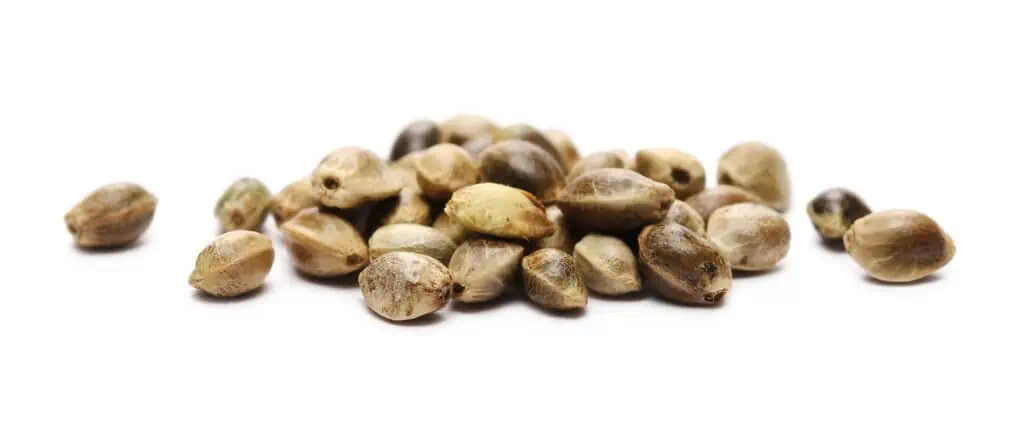
The Bad Cannabis Seed
How do you figure out which seed is bad? Here are a few ways you can tell if your cannabis seed has gone bad.
Green or White Color
At first glance, the seeds have to be either green or white. With this kind of coloration, it means that the cannabis seeds have not fully matured.
In addition, low-quality seeds may have a dull and matte appearance. Green cannabis seeds can develop when they are harvested early before they fully mature. Using these light-colored seeds can result in an unsuccessful germination.
Irregular Shape
While healthy cannabis seeds come in all shapes and sizes, there are a few ways to tell that you are seed is not good. Seeds that do not have a tear-drop body are less likely to produce a successful yield. Seeds that are flat or deformed can either have an unsuccessful germination or produce less-than-optimal plants.
Old Seeds
Older and less viable seeds can feel slightly soft and spongy. The worst-quality seeds can even crack under the pressure due to their low moisture and nutritional content compared to young seeds.
If you see the seeds cracking, breaking, or have dents, that is when you know it is of low quality. Most times, how the seed was handled before you purchased it will make a difference in whether it is good or bad. And sometimes, it is a matter of being lucky, how it turns out.
Become a Cannabis-Growing Expert at CTU
If you want to learn more about these and other methods of feminizing cannabis seeds, enroll now in Cannabis Training University's how to grow marijuana program!
Our Master of Cannabis Certification Program can help new growers become experts and help seasoned growers learn innovative growing techniques. Enroll in the world’s leading online cannabis school today!
Can I make a cannabis seed female?
The conversion of a cannabis seed into a female plant is conceivable and is referred to as feminization. In order to develop female plants, which are the ones that produce the flowers (buds) with higher quantities of THC, feminization entails changing the genetics of the seeds.
“
There are over 300,000 jobs in the cannabis industry. CTU trained me for one of them!

Makes $24.50 @ THC +
What is the downside to feminized cannabis seeds?
Almost every plant cultivated from feminized cannabis seeds will be female and hence capable of producing the cannabinoid-rich blooms most producers are looking for. Feminized cannabis seeds are deliberately designed to exclude male chromosomes. Nevertheless, using feminized seeds may have certain drawbacks, such as:
No Male Plants for Breeding: Feminized seeds aren't the best option if you want to breed new strains or need male plants for other purposes. For conventional breeding, males are essential.
Risk of Hermaphrodites: Feminized plants may generate both male and female reproductive organs in response to stress (such as changes in the light cycle, food problems, or physical harm). These plants can pollinate both other females and themselves, producing seeds that you can collect.
Genetic Diversity: Restricting the use of feminized seeds from one particular lineage over time may lessen the genetic diversity of cannabis plants grown for use. Hardier plants, resistance to diseases and pests, and the possibility for new strains can all result from genetic variety.
Cost: Due to the additional steps and guarantee they provide of generating female plants, feminized seeds frequently cost more than ordinary seeds.
Naturalism: Some growers like to cultivate marijuana as naturally as they can, which involves utilizing ordinary seeds and letting plants grow unhindered.
Some growers believe that gendered plants have less vitality or are less robust than plants developed from ordinary seeds, though this opinion isn't shared by all.
It's important to note that not all growers share this belief, which is based on the idea that the stress involved in producing a feminized seed can affect the eventual plant.
Concerns concerning the ethics of changing plant genders exist, particularly in relation to extensive agricultural practices and potential effects on biodiversity.

Luis Cordova
Luis Cordova is a distinguished author, and renowned expert in cannabis cultivation, who possesses a Master's degree in Plant Biotechnology and Pharmaceutical Science. As a valued contributor to highly esteemed publications such as Cannabis Training University and Maximum Yield Magazine, Luis has emerged as a trusted source of guidance and knowledge in the cannabis industry. Having written thousands of informative articles, Luis is widely recognized for his comprehensive expertise on cultivating cannabis, both indoors and outdoors.


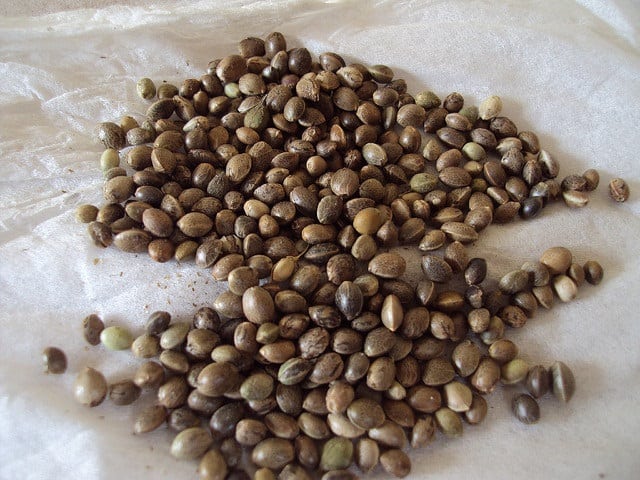
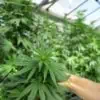

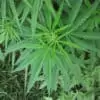

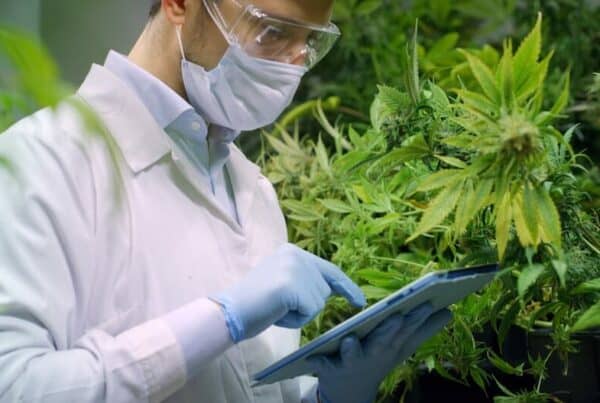
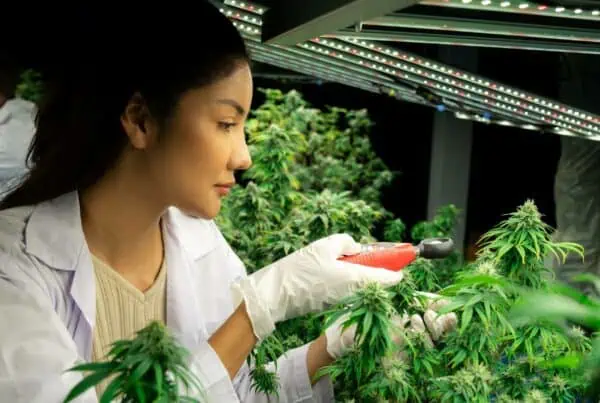
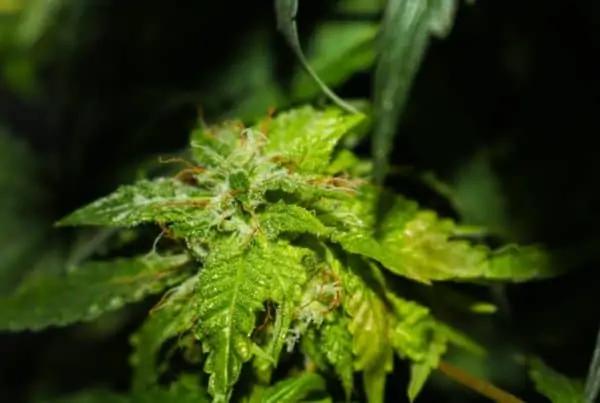
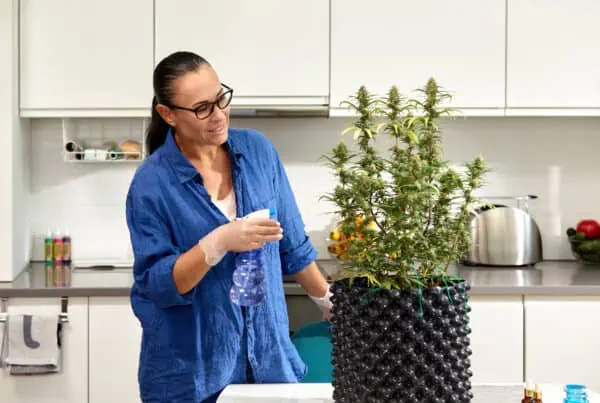

 Jeff was involved in an accident where he endured a traumatic brain injury. He had a week-long stay in ICU where brain surgeons
Jeff was involved in an accident where he endured a traumatic brain injury. He had a week-long stay in ICU where brain surgeons  100% risk free money back guarantee within 48 hours after purchase if student has not completed any of the courses or exams.
100% risk free money back guarantee within 48 hours after purchase if student has not completed any of the courses or exams.